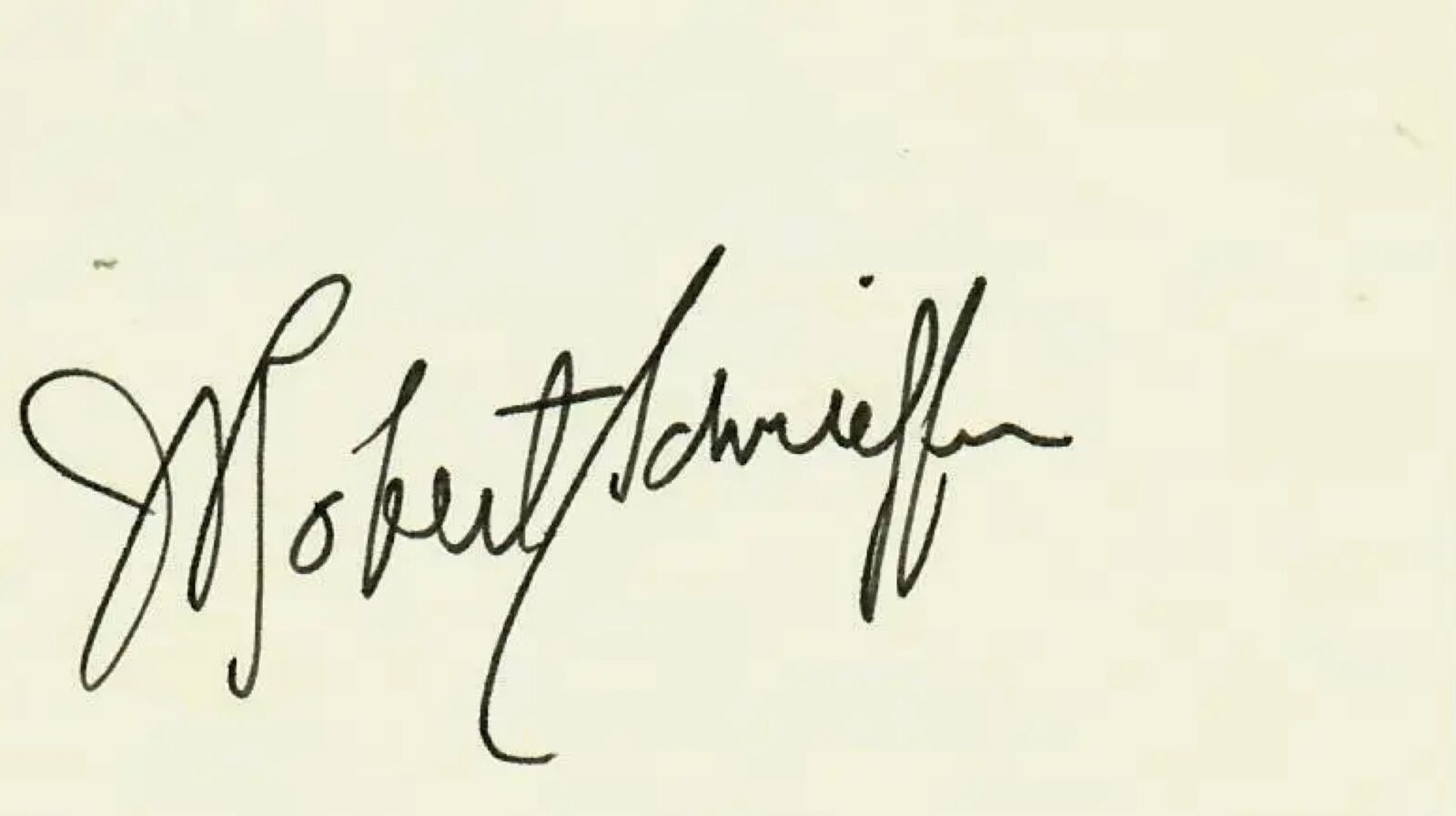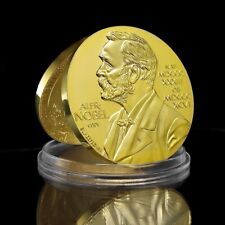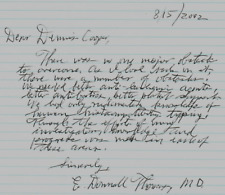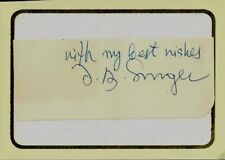"Nobel Prize in Physics" John Robert Schrieffer Signed 3X5 Card Todd Mueller COA For Sale

When you click on links to various merchants on this site and make a purchase, this can result in this site earning a commission. Affiliate programs and affiliations include, but are not limited to, the eBay Partner Network.
"Nobel Prize in Physics" John Robert Schrieffer Signed 3X5 Card Todd Mueller COA:
$199.99
Up for sale a RARE! "Nobel Prize in Physics" John Robert Schrieffer Signed 3X5 Card.This item is certified authentic by Todd Mueller Autographs and comes with their Certificate of Authenticity.ES-3607John Robert Schrieffer(/ˈʃriːfər/; May 31, 1931– July 27, 2019)was an American physicist who, withJohn BardeenandLeon Cooper, was a recipient of the 1972Nobel Prize in Physicsfor developing theBCS theory, the first successful quantum theory ofsuperconductivity. In 2005, Schrieffer fell asleep while driving and received a sentence of two years in prison for vehicular manslaughter which killed one, and injured seven other people.Schrieffer was born inOak Park, Illinois, the son of Louise (Anderson) and John Henry Schrieffer.His family moved in 1940 toManhasset, New York, and then in 1947 toEustis, Florida, where his father, a former pharmaceutical salesman, began a career in the citrus industry. In his Florida days, Schrieffer enjoyed playing with homemade rockets and ham radio, a hobby that sparked an interest in electrical engineering. After graduating fromEustis High Schoolin 1949, Schrieffer was admitted to theMassachusetts Institute of Technology, where for two years he majored in electrical engineering before switching to physics in his junior year. He completed a bachelor's thesis on multiplets in heavy atoms under the direction ofJohn C. Slaterin 1953. Pursuing an interest in solid-state physics, Schrieffer began graduate studies at theUniversity of Illinois at Urbana–Champaign, where he was hired immediately as a research assistant to John Bardeen. After working out a theoretical problem of electrical conduction on semiconductor surfaces, Schrieffer spent a year in the laboratory, applying the theory to several surface problems. In his third year of graduate studies, he joined Bardeen and Leon Cooper in developing the theory of superconductivity. Schrieffer recalled that in January 1957 he was on a subway in New York City when he had an idea of how to describe mathematically the ground state of superconducting atoms. Schrieffer and Bardeen's collaborator Cooper had discovered that electrons in a superconductor are grouped in pairs, now calledCooper pairs, and that the motions of all Cooper pairs within a single superconductor are correlated and function as a single entity due to phonon-electron interactions. Schrieffer's mathematical breakthrough was to describe the behavior of all Cooper pairs at the same time, instead of each individual pair. The day after returning to Illinois, Schrieffer showed his equations to Bardeen, who immediately realized they were the solution to the problem. The BCS theory (Bardeen-Cooper-Schrieffer) of superconductivity, as it is now known, accounted for more than 30 years of experimental results that had stymied some of the greatest theorists in physics. After completing his doctoral dissertation on the theory of superconductivity, Schrieffer spent the 1957–1958 academic year as aNational Science Foundationfellow at theUniversity of Birminghamin England and at theNiels Bohr Institutein Copenhagen, where he continued research into superconductivity. Following a year as assistant professor at the University of Chicago, he returned to the University of Illinois in 1959 as a faculty member. In 1960, he went back to the Bohr Institute for a summer visit, during which he became engaged to Anne Grete Thomsen whom he married at Christmas of that year. Two years later, Schrieffer joined the faculty of theUniversity of PennsylvaniainPhiladelphia, and, in 1964, Schrieffer published his book on the BCS theory, Theory of Superconductivity. He held honorary degrees from theTechnical University of Munichand theUniversity of Geneva. In 1968 Schrieffer, along with Leon Cooper, were awarded theComstock Prize in Physicsfrom theNational Academy of Sciences.In 1972, Schrieffer along with John Bardeen and Leon Cooper won the 1972 Nobel Prize in Physics for developing the BCS theory. In 1980, Schrieffer became a professor at theUniversity of California, Santa Barbara, and rose to chancellor professor in 1984, serving as director of the university'sKavli Institute for Theoretical Physics. In 1992,Florida State Universityappointed Schrieffer as a university eminent scholar professor and chief scientist of theNational High Magnetic Field Laboratory, where he continued to pursue one of the great goals in physics: room temperature superconductivity. On September 24, 2004, while driving with a suspendedlicense, Schrieffer was involved in an automobile accident that killed one person and injured seven others. Schrieffer was said to have fallen asleep at the wheel of his car. On November 6, 2005, he was sentenced to two years inprisonforvehicular manslaughter. Schrieffer was incarcerated inRichard J. Donovan Correctional Facilityat Rock Mountain nearSan Diego, California.He died in late July 2019 at a nursing facility in Florida while sleeping. He was 88 years old.

Related Items:
Alfred Nobel Peace Prize Medal Coin
$25.00
"Nobel Prize in Medicine" E Donnall Thomas Hand Written Letter COA
$399.99
"Nobel Prize in Literature" Isaac Singer Clipped Signature Mounted
$149.99



